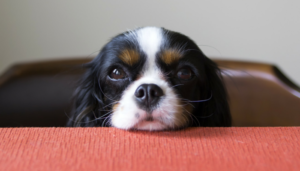
Disclaimer: Please be aware that I am not a veterinarian and this article should only be taken as informational purposes. If your dog experiences increased eye discharge or any sudden changes, or you observe any unexplained behaviors or changes, consult a vet as soon as possible.
Are your canines susceptible to getting eye boogers? You are certainly not alone if this is the case – mine certainly do! I find myself constantly wiping them off of her and it’s likely she will have at least some on pictures taken with me!
Let’s quickly examine why dogs get eye boogers and what you should keep an eye out for as potential health concerns.
Why Do Dogs Develop Eye Boogers? mes While eye discharge in dogs is generally harmless, yellow discharge or pus that appears suddenly could indicate serious infection.
Why do dogs get eye boogers? In this article we’ll examine some of the main causes and symptoms for canine eye discharge, and potential dangers to look out for. Here is a quick glimpse at five potential sources.
Conjunctivitis (commonly referred to as Pink Eye) is an inflammation of the tissue covering the front part of an eyeball and eyelids, usually both. Common signs include discharge, excessive blinking, redness and swelling around both eyes. Although most often seen simultaneously in both cases, each may become affected in different circumstances.
Some of the causes of conjunctivitis include viral and bacterial infections, allergies, eyelid abnormalities, glaucoma, tumors, trauma to the eye or environmental pollutants like smoke. Treatment may include antibiotics, pain medications, antihistamines or even surgery to address tear duct issues.
Canine Dry Eye, commonly referred to as Keratoconjunctivitis sicca, is caused by inadequate tear production (or when they evaporate too rapidly) – often as the result of hypothyroidism, Canine Distemper Virus infection and immune disorders which damage tear producing glands. Hypothyroidism and Canine Distemper Virus infections may all decrease tear production which contributes to Dry Eye in dogs.
Signs of canine dry eye include irritation, redness and discharge. Dogs suffering from dry eye may blink excessively or squint wildly while some even close one eye completely; usually both eyes are affected, although one might seem worse than the other. Canine dry eye can lead to Corneal Ulceration which scars your dog’s vision permanently. Depending on its severity treatment may include artificial tears, antibiotics or surgery.
Epiphora
Epiphora can also impact dogs, and simply refers to an increase in tear production from the eyes. This condition can often be an indicator of something else going wrong and associated with various conditions – if your pup seems to have more eye discharge than usual it would be wise to visit their veterinarian to establish what could be causing this behavior change.
Signs that a dog may have dry eye are an excessive wetness around his/her eyes and reddish or brown staining on their fur. If your pup experiences more wetness than normal around their eyes or an unusual amount of discharge from them, speaking with your veterinarian will help identify its source – whether that means antibiotics, steroids or surgery may be required depending on its cause.
Entropion, a genetic eyelid condition, occurs when one or both eyelids fold inward. This causes hair on the surface of the eyelid to rub against the cornea and cause ulceration or perforation, ultimately leading to corneal ulceration or perforation and scar tissue formation that obstructs vision.
Entropion in dogs often manifests itself in symptoms such as squinting, excessive tears and mucus discharge from outer corners of their eyes. Corrective surgery may provide the only effective remedy.
Breed-Specific Issues
Certain breeds of dogs with bulging eyes are more prone to eye issues such as excess eye boogers or discharge.
Exophthalmos, or eye bulging out of orbit, is a condition commonly seen among brachycephalic breeds such as Pugs, Boston Terriers, Boxers, Bulldogs and Shih Tzus with short noses. Bulging eyes increase your dog’s risk for eye problems as more foreign materials enter its eyes more freely.
Bloodhounds and Cocker Spaniels breeds with loose skin tend to be more susceptible to developing eyelid ectropion (eyelids that roll outward) or cherry eye, when glands in their eyelids shift out of position.
As excessive or abnormal eye discharge can be a telltale sign of something more serious ailment in your dog, it’s best to get them checked by their veterinarian to receive proper diagnosis and treatment plan recommendations.





